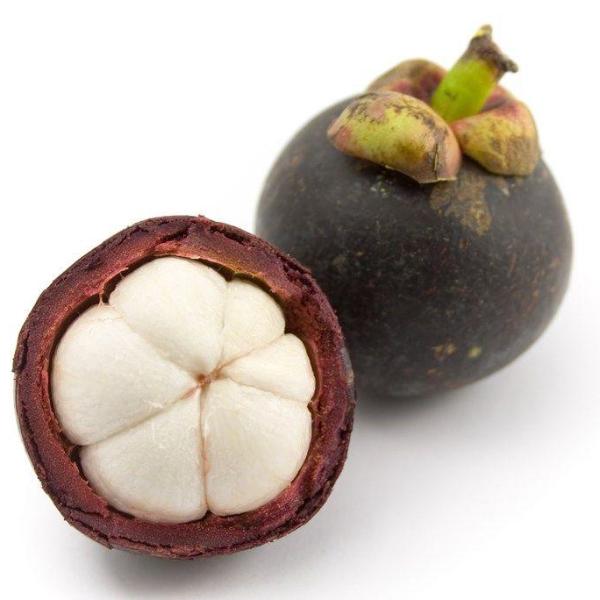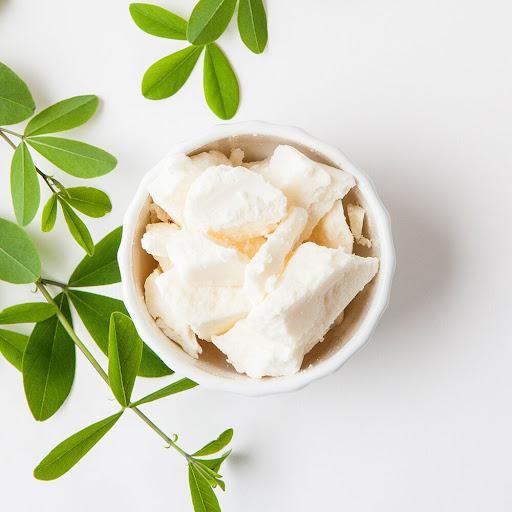Kokum butter originates from the seeds of the kokum tree, a fruit-bearing tree formally known as Garcinia indica, primarily found in tropical regions of India. The fruit and seeds of this tree serve diverse purposes across culinary, cosmetic, and medicinal domains.
Characterized by its light gray or pale yellow hue, kokum butter is predominantly composed of stearic acid, a type of saturated fat. This unique chemical composition enables kokum butter to maintain a solid form at room temperature, distinguishing it from conventional oils and earning it the designation of a butter.
While kokum butter is edible and finds occasional use in the creation of chocolates and confections, its predominant application lies in the realm of topical cosmetic and personal care products. It serves as a key ingredient in a variety of formulations, including makeup, lotions, soaps, balms, and salves, owing to its remarkable versatility and beneficial properties.
Unlike many other plant-based butters, kokum butter possesses a notably hard texture, which readily melts upon contact with the skin, ensuring easy application and absorption. Commercially prepared products often combine kokum butter with other plant oils or butters to achieve a more spreadable consistency, enhancing its usability and efficacy.
Potential Benefits and Uses
Kokum butter exhibits considerable potential as a versatile and efficacious ingredient in numerous cosmetic and pharmacological skincare formulations. Despite its widespread application, there remains a notable dearth of research specifically investigating the pharmacological properties of kokum butter.
1. Restores moisture to dry skin, scalp, and hair
Renowned for its ability to replenish moisture, kokum butter serves as a potent emollient, effectively hydrating various areas of the body, including the skin, lips, feet, scalp, and hair. Its lightweight nature ensures rapid absorption without leaving behind a greasy residue, making it particularly suitable for individuals with sensitive skin. While anecdotal reports suggest kokum butter’s efficacy in moisturizing, empirical evidence supporting these claims remains limited.
2. May soothe inflamed skin
In addition to its moisturizing properties, kokum butter is often utilized topically to alleviate skin inflammation associated with cuts, burns, and ulcerations. A small-scale study involving individuals with dry, cracked heels demonstrated significant symptom improvement following twice-daily application of kokum butter for 15 days. However, robust research validating the therapeutic efficacy of kokum butter for inflammatory skin conditions is lacking, necessitating further investigation.

3. May treat acne
While kokum butter is commonly purported as a treatment for acne, supported by its non-comedogenic nature and moisturizing capacity, empirical evidence substantiating its effectiveness is lacking. The outcome of using kokum butter as an acne treatment may vary depending on the underlying cause of acne, such as dry skin, excess oil production, hormonal imbalances, or bacterial overgrowth. Although kokum butter holds promise in restoring moisture to dry, irritated skin, its long-term effects on acne require further scrutiny.
4. May reduce visible signs of aging
Kokum butter is frequently lauded for its purported ability to diminish visible signs of aging skin, including wrinkles, diminished elasticity, increased fragility, and dryness. While its emollient properties may enhance skin moisture and temporarily improve its appearance, the transient nature of topical moisturizers suggests that kokum butter’s anti-aging benefits may not endure beyond its use. Hence, additional research is warranted to elucidate the mechanisms underlying kokum butter’s potential role in promoting skin health and combating signs of aging.
RELATED: What are the Skin and Hair Benefits of Coconut Milk?
Kokum butter offers several Advantages
- Structural Stability: Kokum butter ranks among the most structurally and chemically stable plant butters available. Its robust stability makes it an excellent choice as a natural emulsifier or hardening agent in homemade cosmetics.
- Easy Absorption: Unlike many other plant-derived butters, kokum butter is exceptionally light and is absorbed rapidly and effortlessly into the skin, leaving no greasy residue. This stands in contrast to coconut, shea, and cocoa butters, which may feel heavier upon application.
- Odorless Nature: Kokum butter naturally lacks any scent, unlike cocoa, coconut, and shea butters, which are renowned for their distinct fragrances. For individuals sensitive to scents, kokum butter presents a preferable option.
- Non-Comedogenic: Similar to shea butter, kokum butter is non-comedogenic, meaning it does not clog pores or contribute to acne formation. In contrast, cocoa and coconut butters have a higher likelihood of pore-clogging and are not recommended for facial use.

Drawbacks of Kokum butter
- Higher Price: In comparison to other plant-derived butters, kokum butter tends to be more expensive.
- Limited Availability: Kokum butter may not be as readily accessible as other popular plant butters, posing a challenge for consumers seeking it.
- Difficult to Work With: The hard and tough texture of kokum butter can make it challenging to incorporate into formulations, particularly for those accustomed to softer butters.
Bottom Line
Ultimately, whether to substitute other plant butters with kokum butter depends on individual preferences and intended usage. For individuals crafting soap or lip balm or those seeking alternatives to scented or pore-clogging butters, kokum butter presents a viable option worth exploring.
